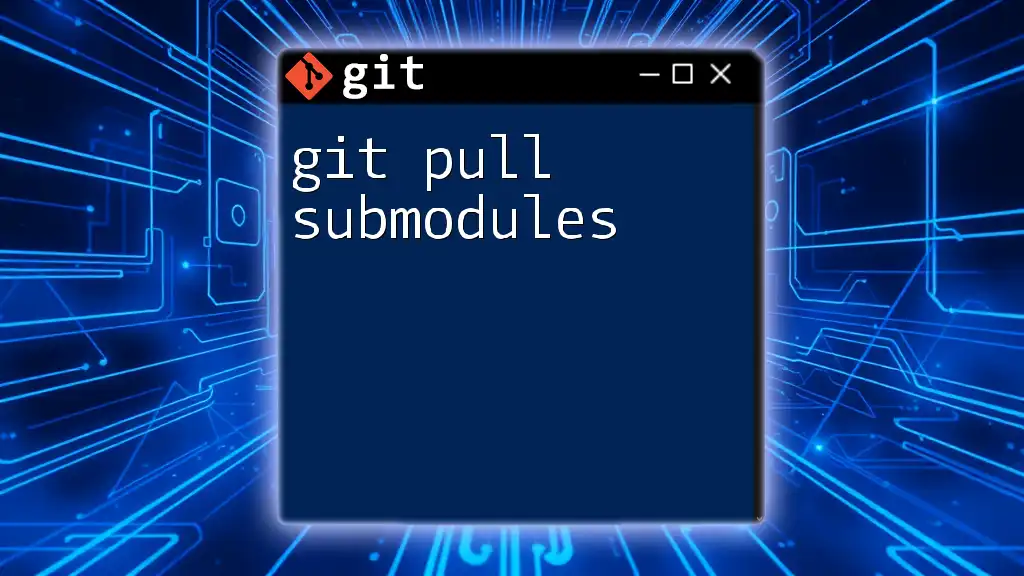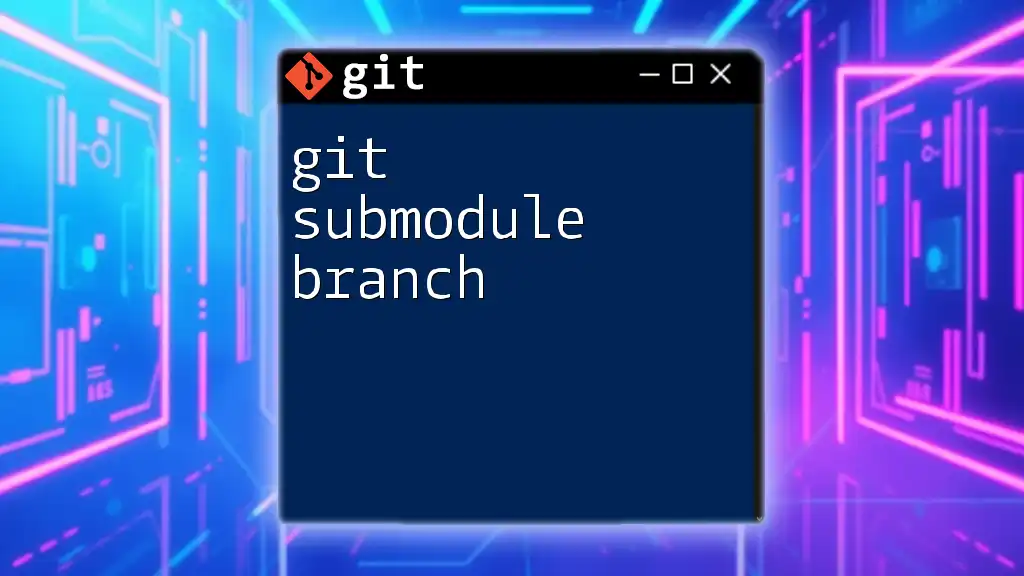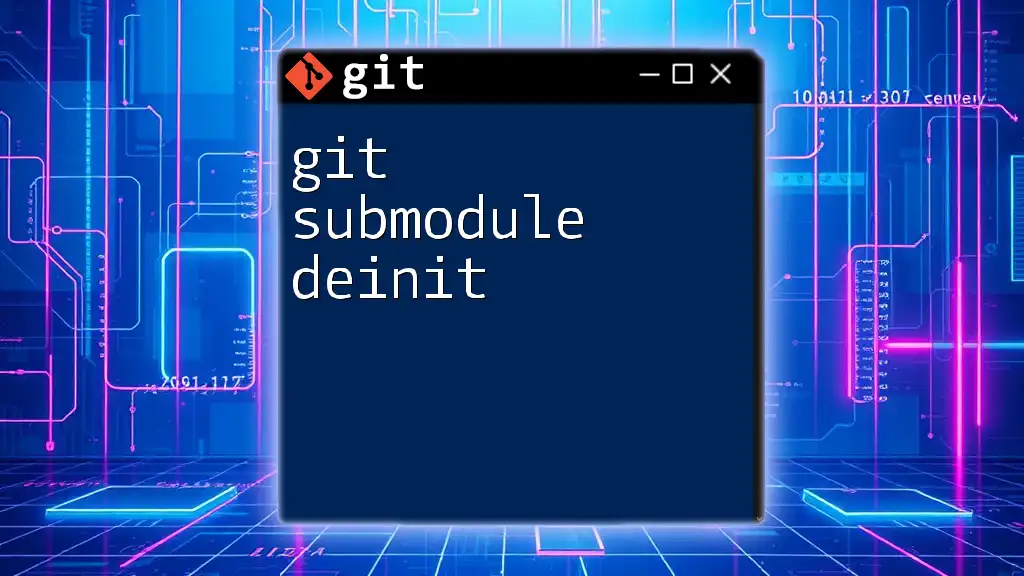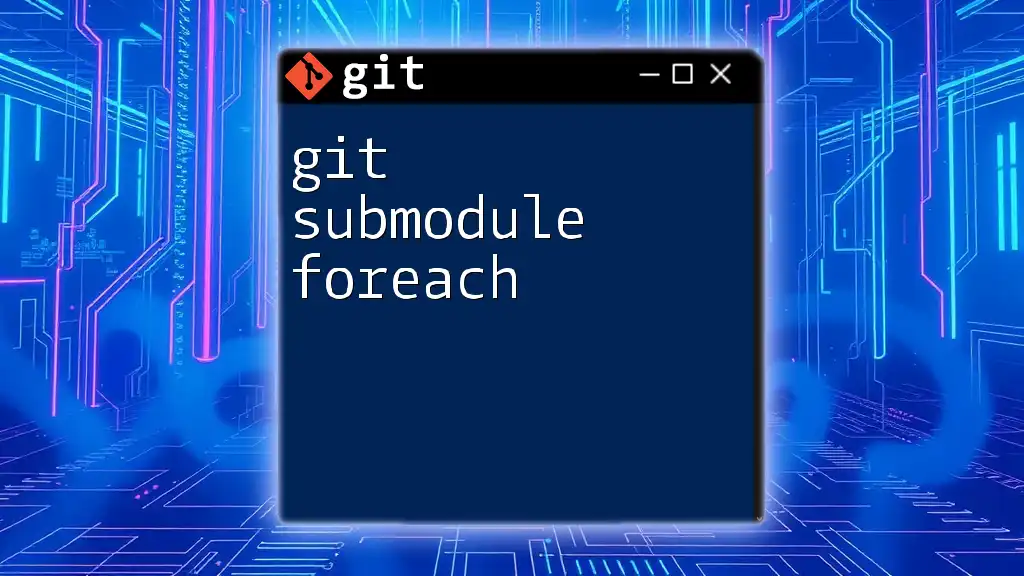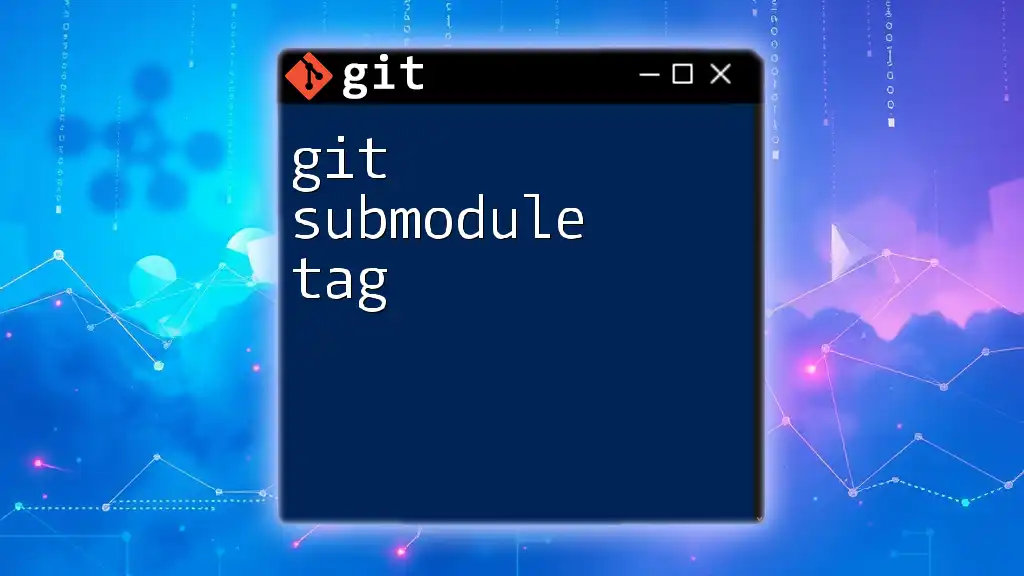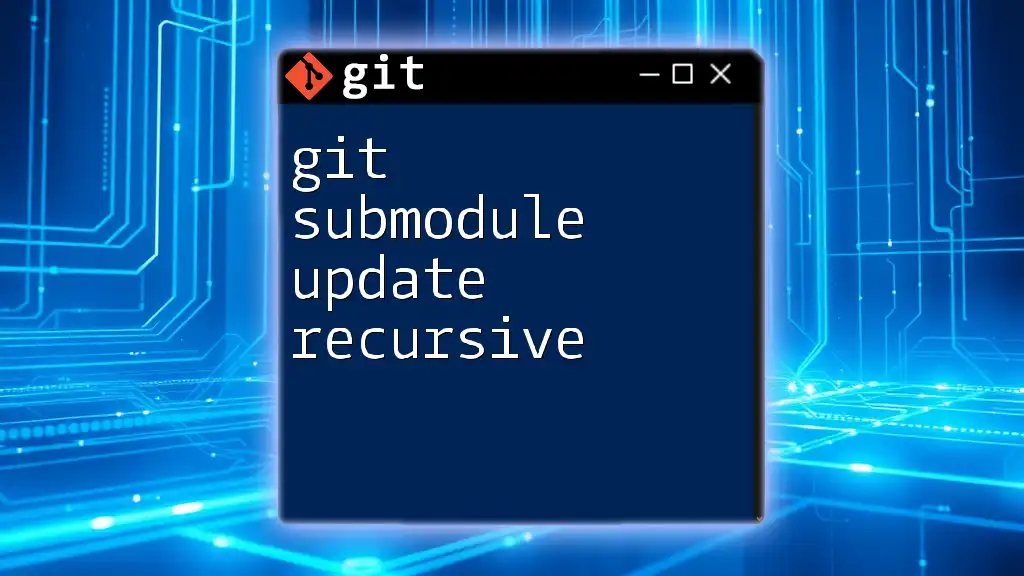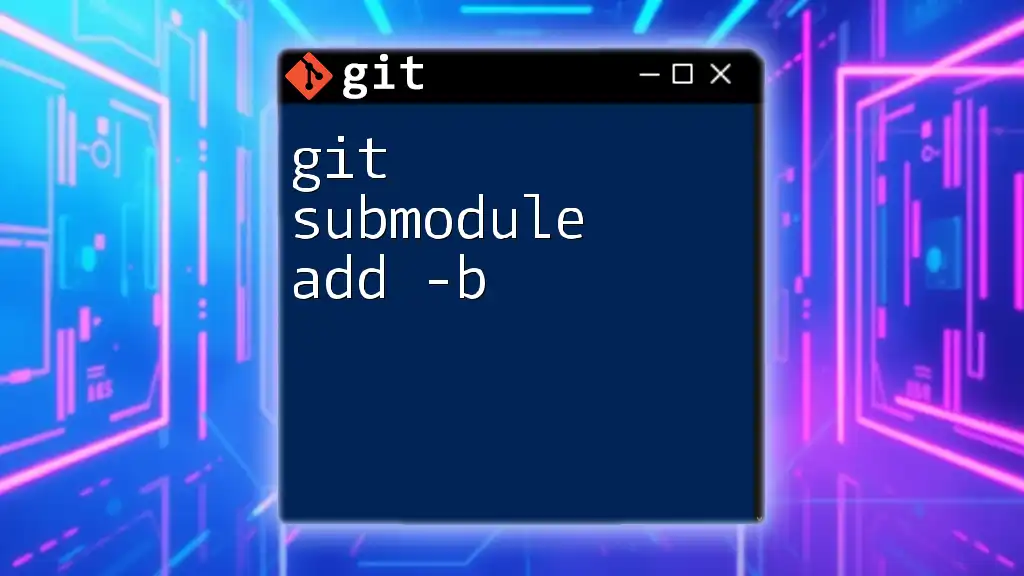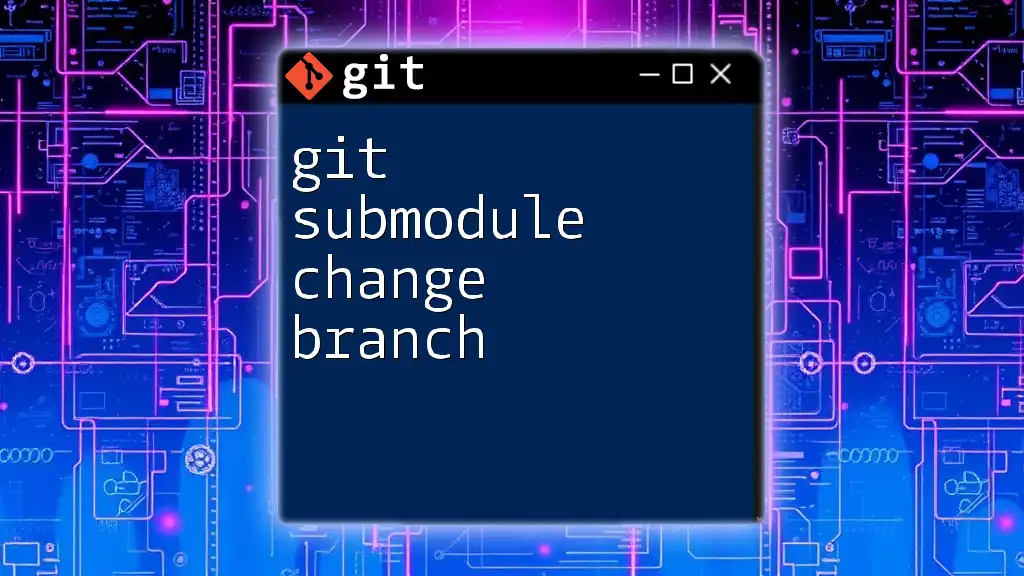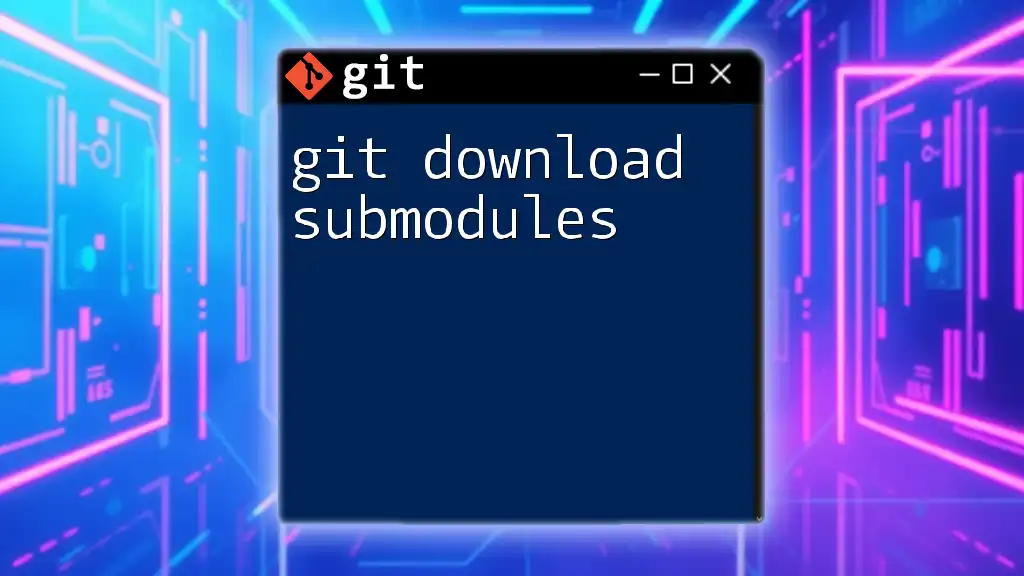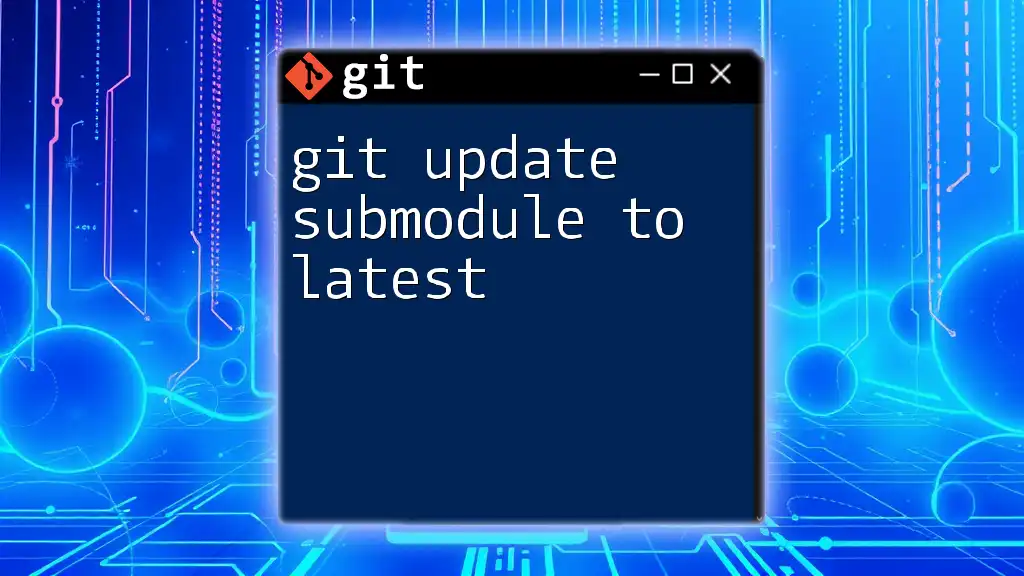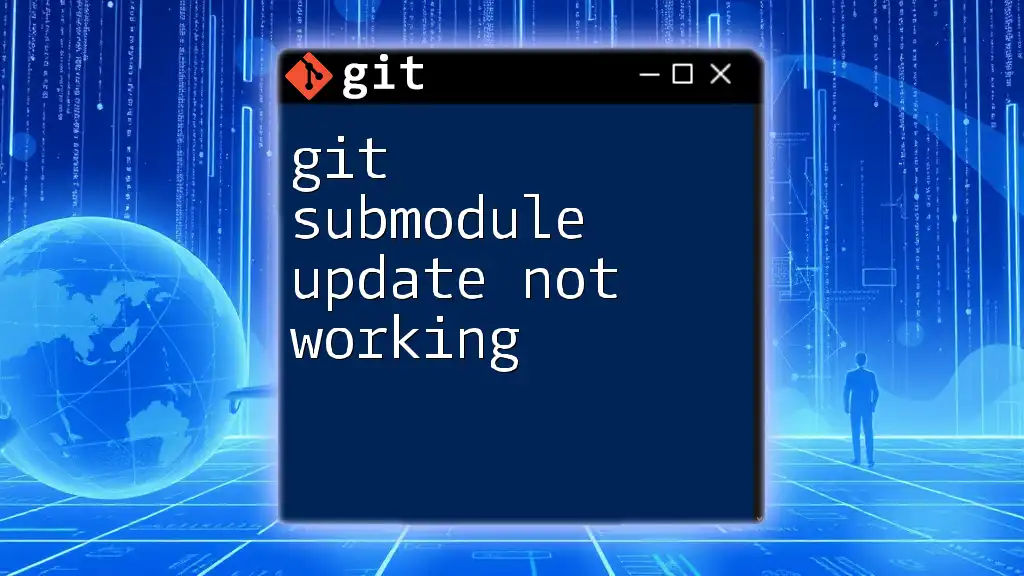To update your Git repository along with its submodules, use the command `git pull --recurse-submodules` to ensure both the main repository and its submodules are synchronized with the remote.
git pull --recurse-submodules
Understanding Git Submodules
Git submodules allow you to incorporate and manage external repositories within your own project. By treating these external repositories as submodules, you gain modularity, which not only streamlines your workflow but keeps project dependencies under version control.
What are Submodules?
Submodules are a way of including a Git repository as a subdirectory within another Git repository. This is especially useful in large projects that may rely on components managed in separate repositories. With submodules, you can ensure that each component stays aligned with specific commits, safeguarding against incompatible changes.
Why Use Submodules in a Project?
Using submodules offers numerous advantages:
- Modular Development: Break down projects into smaller, manageable pieces.
- Separate Repositories and Version Control: Each submodule can track its own history, making it easier to manage updates without affecting the main repository's stability.
- Improve Project Organization: Separating functionalities into different repositories can lead to cleaner and more organized codebases.
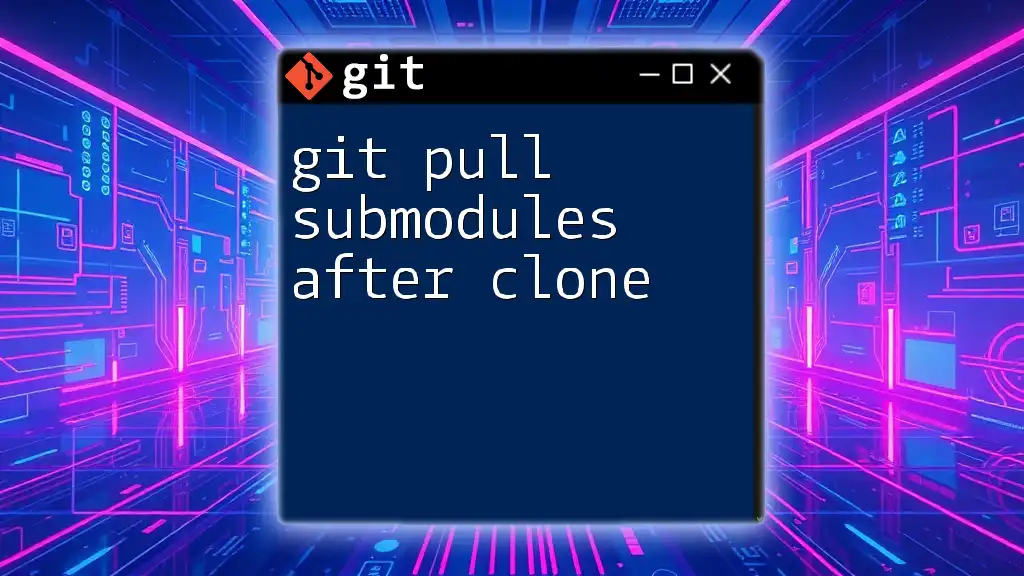
Prerequisites
Before diving into using submodules, you should have a basic familiarity with Git commands, as well as a setup ready for Git interactions. Ensure that your environment is configured with Git and you have access to terminal or command prompt.
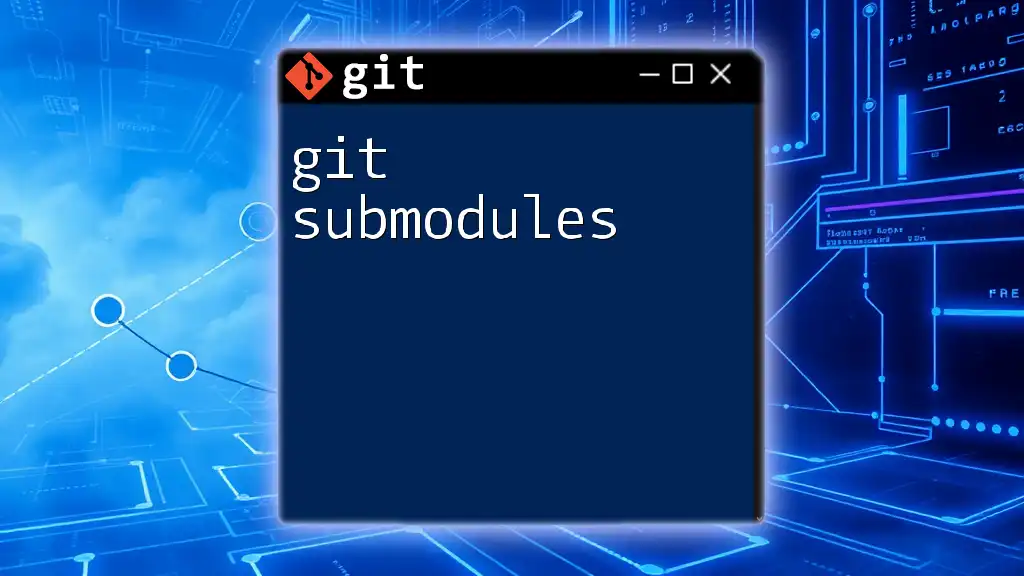
Cloning a Repository with Submodules
When you clone a repository that contains submodules, it’s crucial to initialize and fetch all the submodule content correctly. You can achieve this effectively using the `--recurse-submodules` flag.
The `git clone` Command
To clone a repository including its submodules, you would use:
git clone --recurse-submodules <repository-url>
This command not only clones the main repository but also checks out all the submodules defined in that repository. If you forget to specify `--recurse-submodules`, the submodules will not be cloned automatically.
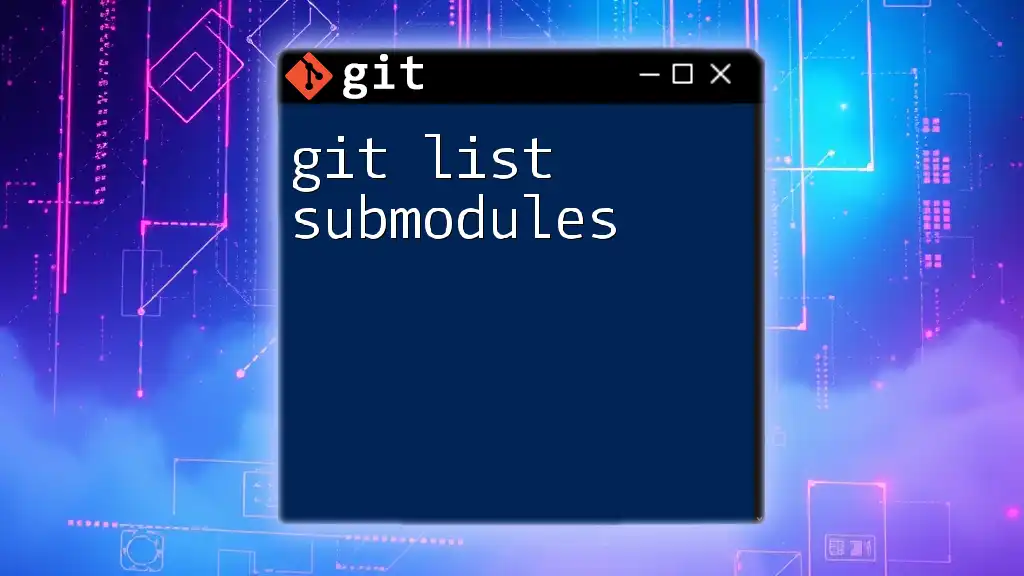
Understanding `git pull` with Submodules
The `git pull` command is your go-to for updating your local branch with changes from the remote repository. However, pulling changes in a repository that contains submodules requires a bit of additional consideration since submodules can behave independently from the main repository.
What Does `git pull` Do?
The `git pull` command essentially performs two actions: it fetches changes from a remote branch and merges them into your current branch. However, the submodules need to be handled separately to ensure they reflect the latest changes from their respective repositories.
How `git pull` Behaves with Submodules
When you perform a simple `git pull`, it updates the main repository but does not automatically pull in any changes from the submodules. This can lead to situations where the main project is up to date, but the submodules remain outdated or out of sync.
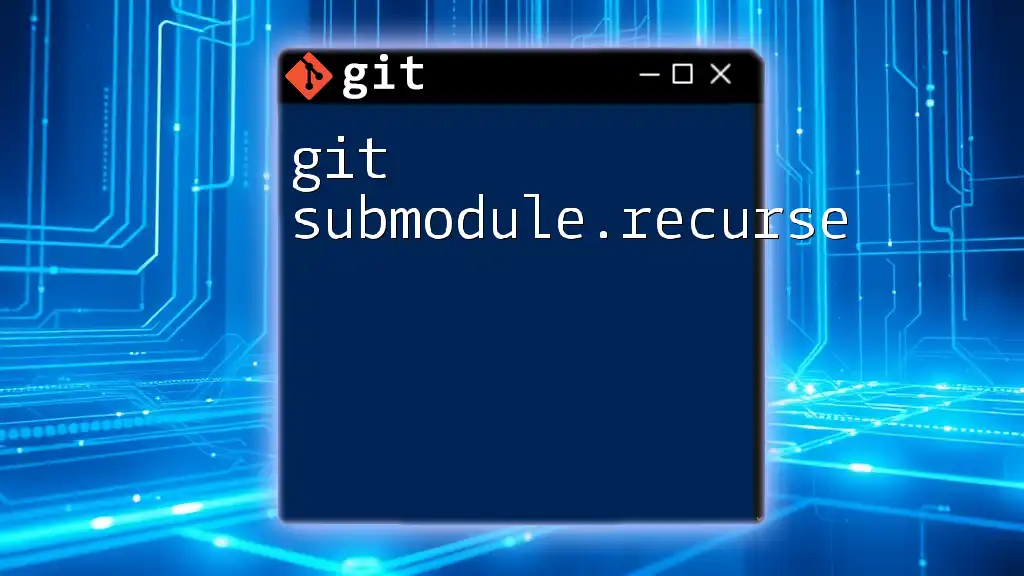
Pulling Changes from Submodules
To ensure that both the main repository and its submodules are updated properly, you can use the `--recurse-submodules` option along with the `git pull` command.
Performing a `git pull` with Submodules
Execute the following command to pull changes for both your local branch and its submodules:
git pull --recurse-submodules
This command ensures that all submodules are fetched and updated according to their specified versions. It’s crucial to remember that this approach aggregates changes from both repositories, allowing for a smoother development experience.
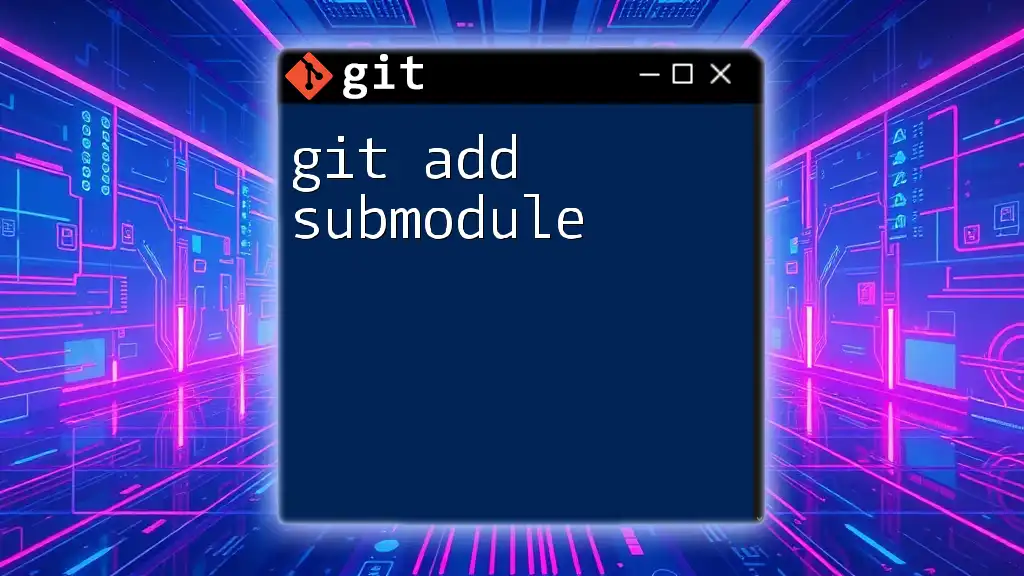
Updating Submodules
Keeping your submodules updated is essential for maintaining project integrity. If there have been changes in the submodules that you want to incorporate, you'll need to run a specific command to ensure they reflect the latest versions from their remote sources.
The `git submodule update` Command
To update your submodules, use:
git submodule update --remote
This command fetches the latest changes from the remote repositories of each of your submodules. Depending on the setup, it may advance the checked-out version of the submodule to whatever is specified (like `master` or a specific branch).
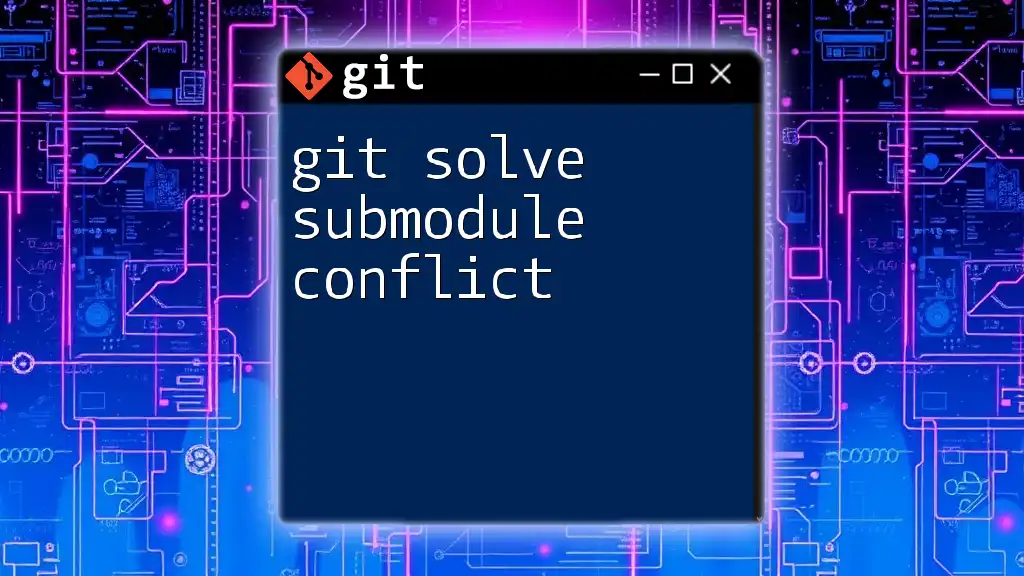
Common Issues When Pulling Submodules
While working with submodules, you may encounter challenges that can hinder your workflow. Being aware of these issues and knowing how to manage them is essential.
Conflicts During Pull
Conflicts can arise if the development on the submodules diverges significantly between branches. If you run into merge conflicts in a submodule, you'll need to navigate to that submodule's directory and resolve the conflicts just as you would within the main repository.
Detached HEAD State in Submodules
After performing operations like cloning or pulling, submodules can sometimes be left in a detached HEAD state. This status means that the submodule is not tracking a branch but rather a specific commit. To resolve this, you can navigate to the submodule directory and check out a branch:
cd <submodule-directory>
git checkout <branch-name>
This action ensures you're working on the latest branch rather than a fixed commit.
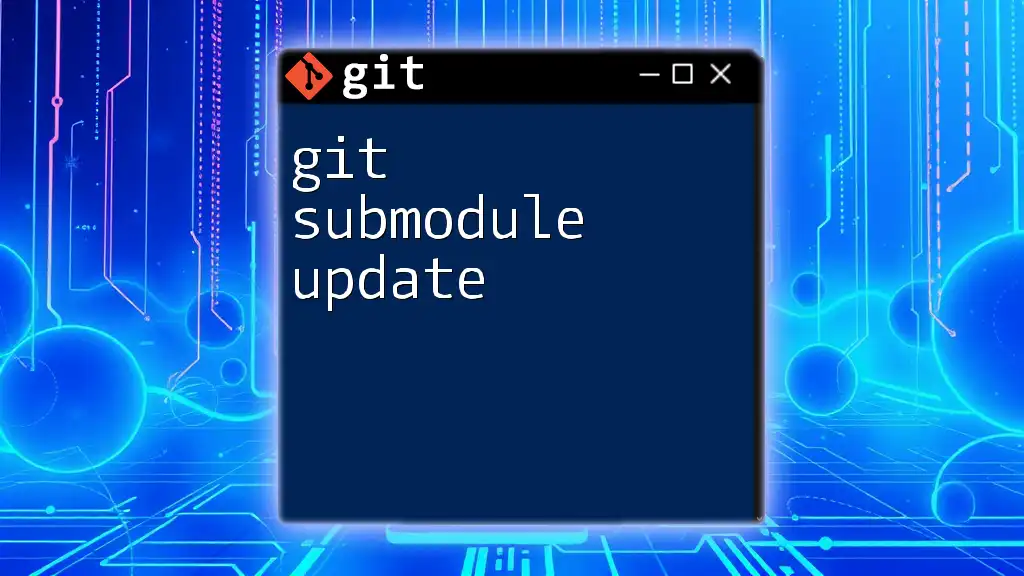
Best Practices for Working with Git Submodules
To avoid problems and enhance your experience with Git submodules, consider adhering to these best practices:
- Regularly Update Submodules: Make it a habit to pull the latest changes in both the main repository and its submodules.
- Document Submodule Dependencies: Maintain clear documentation regarding the purpose and required versions of submodules within your main project. This helps your team better understand the project's structure.
- Versioning Submodules in a Project: Be intentional with which versions of submodules are used. Locking submodules to specific commits prevents unexpected changes from breaking your project.
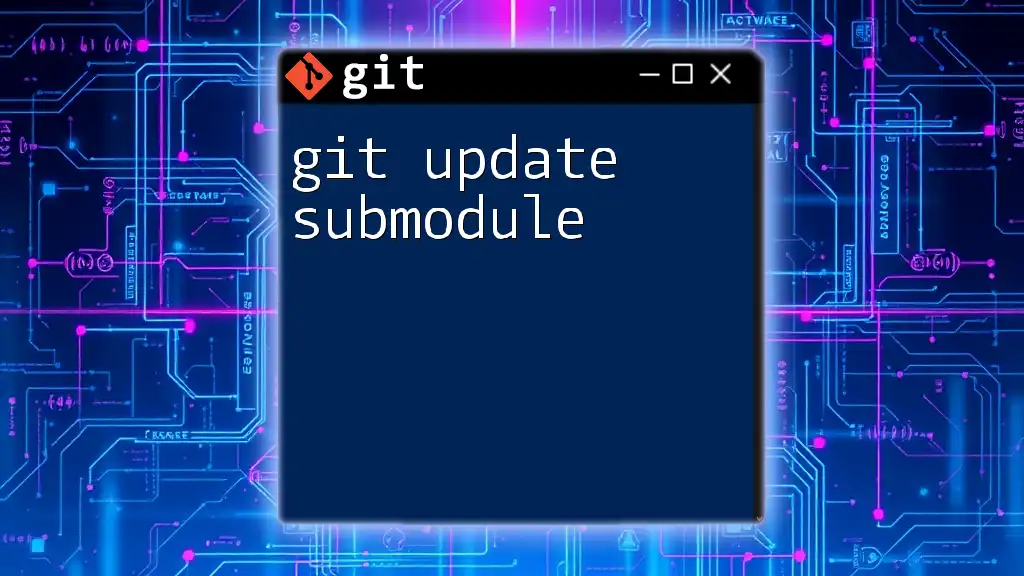
Conclusion
Git submodules provide a powerful means to manage external repositories within your projects, enabling better organization and modular development. By understanding how to effectively use `git pull` with submodules, you can ensure your projects remain up-to-date and free from conflicts. Remember to practice the best practices we've discussed to enhance your overall Git experience.
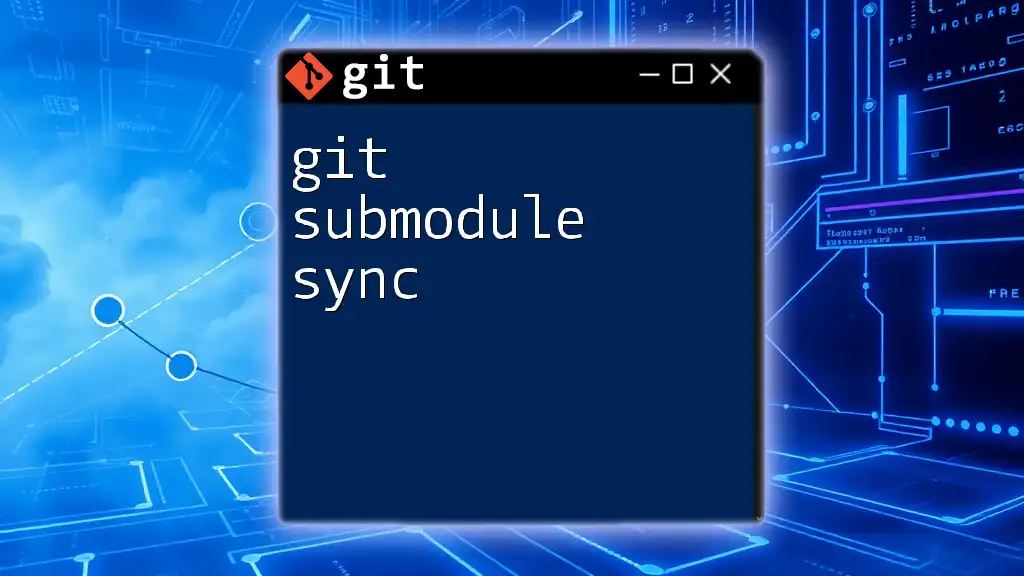
Additional Resources
To further your understanding of Git and submodules:
- Explore recommended reading on advanced Git techniques and workflows.
- Refer to the official Git documentation for comprehensive coverage of all Git commands.
- Check out video tutorials that visually guide you through working with Git submodules.

